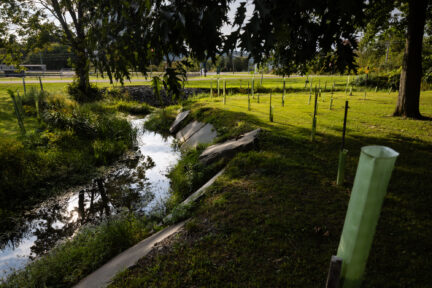Experts, decision makers focus on improving environmental education
Environmental education experts, cabinet-level representatives from state government, and other decision makers gathered in Annapolis on Wednesday to explore how states can assist local education agencies in creating and sustaining high-quality environmental literacy programming as part of their ongoing education reforms and to meet commitments under the 2014 Chesapeake Bay Watershed Agreement.
Environmental education experts, cabinet-level representatives from state government, and other decision makers gathered in Annapolis on Wednesday to explore how states can assist local education agencies in creating and sustaining high-quality environmental literacy programming as part of their ongoing education reforms and to meet commitments under the 2014 Chesapeake Bay Watershed Agreement.
“Getting students outside and engaging them in immersive hands-on learning projects is the best way to inspire the next generation of scientists and environmental stewards,” said Congressman John Sarbanes, who authored legislation to help create a new federal grant program for environmental education. “Research shows that outdoor environmental learning makes our kids healthier, improves student development and boosts academic achievement. I was glad to see educators, environmental education experts, state government representatives and federal officials all come together today to find ways to expand environmental education in our state and throughout the country.”

From across all levels of government to non-profits and school districts, summit attendees agreed that environmental literacy is fundamental for a well-rounded education. The Environmental Literacy goal of the Chesapeake Bay Watershed Agreement ‘enables every student in the region to graduate with the knowledge and skills to act responsibly to protect and restore their local watershed’. The group reaffirmed their commitment to moving environmental literacy forward across the watershed and working harder to ensure that all students have access to quality environmental education.
“It is critical that children understand the value of our natural world so they will recognize its importance and act as citizen stewards throughout their lives to protect it”, said Nick DiPasquale, Director of the Chesapeake Bay Program. “This Environmental Literacy Summit was both remarkable and timely in bringing together educators, natural resource agency leaders and non-profit organizations to work collaboratively to promote environmental education”.

A forum for cross-jurisdictional coordination and support on all aspects of environmental education throughout the Chesapeake Bay Watershed, the Education Workgroup under the Chesapeake Bay Program seeks to have every student in the region graduate environmentally literate. The Environmental Literacy Leadership Summit was coordinated by the National Oceanic and Atmospheric Administration (NOAA) Chesapeake Bay Office on behalf of the Chesapeake Bay Program to advance environmental literacy programs and policies throughout the Chesapeake Bay Watershed.



